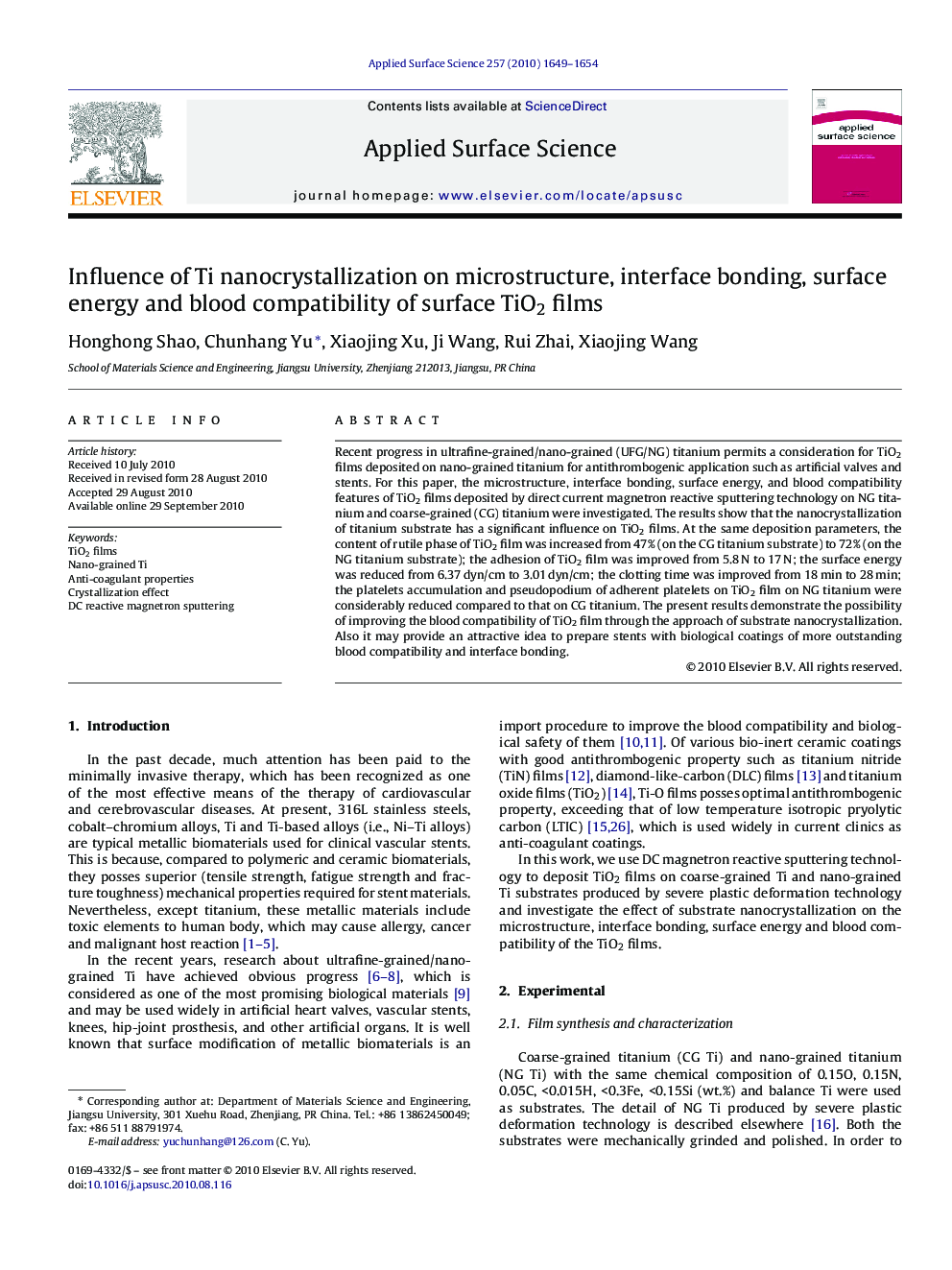| Article ID | Journal | Published Year | Pages | File Type |
|---|---|---|---|---|
| 5359523 | Applied Surface Science | 2010 | 6 Pages |
Abstract
Recent progress in ultrafine-grained/nano-grained (UFG/NG) titanium permits a consideration for TiO2 films deposited on nano-grained titanium for antithrombogenic application such as artificial valves and stents. For this paper, the microstructure, interface bonding, surface energy, and blood compatibility features of TiO2 films deposited by direct current magnetron reactive sputtering technology on NG titanium and coarse-grained (CG) titanium were investigated. The results show that the nanocrystallization of titanium substrate has a significant influence on TiO2 films. At the same deposition parameters, the content of rutile phase of TiO2 film was increased from 47% (on the CG titanium substrate) to 72% (on the NG titanium substrate); the adhesion of TiO2 film was improved from 5.8Â N to 17Â N; the surface energy was reduced from 6.37Â dyn/cm to 3.01Â dyn/cm; the clotting time was improved from 18Â min to 28Â min; the platelets accumulation and pseudopodium of adherent platelets on TiO2 film on NG titanium were considerably reduced compared to that on CG titanium. The present results demonstrate the possibility of improving the blood compatibility of TiO2 film through the approach of substrate nanocrystallization. Also it may provide an attractive idea to prepare stents with biological coatings of more outstanding blood compatibility and interface bonding.
Related Topics
Physical Sciences and Engineering
Chemistry
Physical and Theoretical Chemistry
Authors
Honghong Shao, Chunhang Yu, Xiaojing Xu, Ji Wang, Rui Zhai, Xiaojing Wang,
